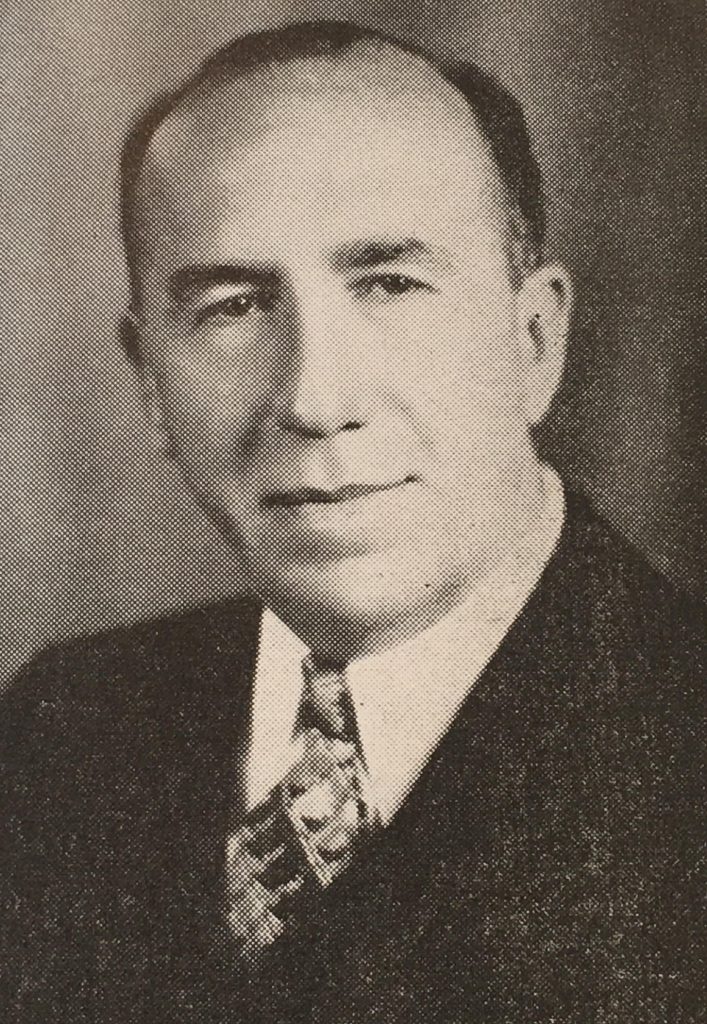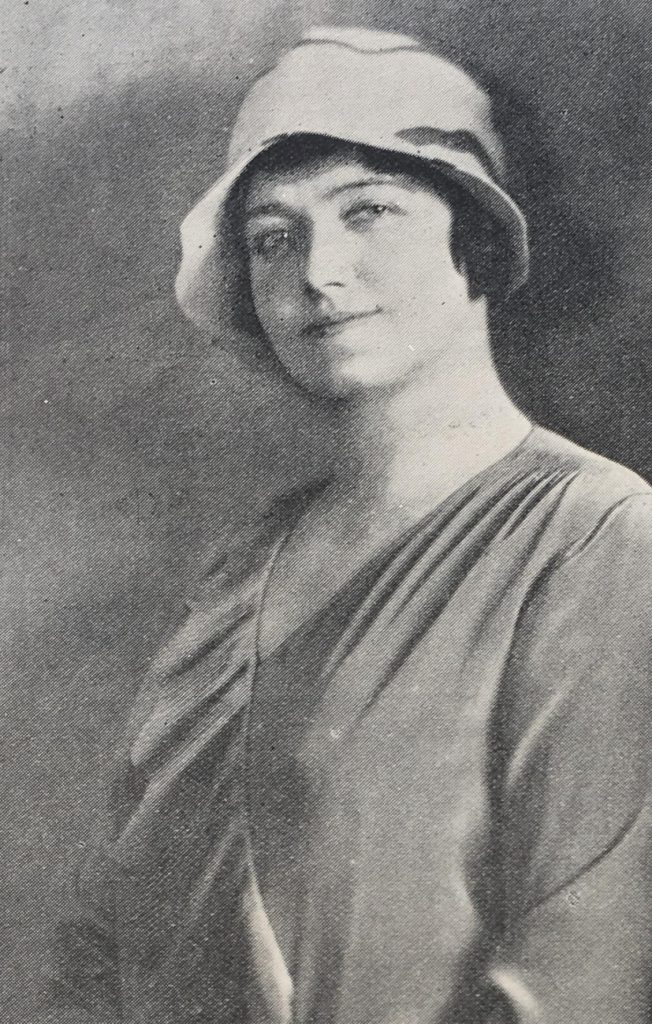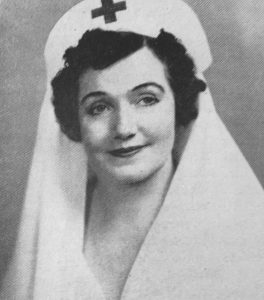Toast To Olde Tymes – The Thomas J. Stricklers

“Dan Cupid pranced merrily this summer, positive his persuasive powers would tie a nuptial knot of importance to Kansas City, a union of big business and much musical ability,” our scribe wrote, back in September 1929. The duo in the limelight were Margaret Jane Armstrong, a coloratura soprano, and Thomas Johnson Strickler, World War I veteran and general manager of the Kansas City Gas Company. They wed at the Church of the Disciples of Christ on the University of Chicago campus that August. Their honeymoon destination was Mackinac Island: “Domiciled at the Grand Hotel, Major and Mrs. Strickler spent the time in golfing, strolling about the rugged coast, or driving through the thickly wooded interior in an old fashioned horse-drawn carriage. For such is the quaint custom of the Island, for motor cars are taboo.” (We picture our scribe typing these words and then pausing for a moment, perhaps to savor the image – and maybe to light another cigarette.) On their return, they set up housekeeping at the Riviera. Was the new Mrs. Strickler abandoning her career in favor of domestic duties? Oh, heavens, no. “The soprano will fill five out-of-town concert engagements this winter,” The Independent stated, noting that her husband would be traveling with her.
Margaret Jane Armstrong was born in Kansas City in August 1892, only a few months before the death of her father, Robert Henry Armstrong. (Records show that he was in his late thirties when he died of a fractured skull at 1626 Harrison Street that December, but little else.) She was the youngest of the family’s three children. Her mother, Mary B. Armstrong (née Rea), was a dressmaker. In her youth, Margaret studied with Jennie Schultz, who was a music teacher in Our Town for more than 50 years. (After her death, Jennie was lauded by the Kansas City Times for “her kindly nature, her interest in students and her standards of attainment.”) Margaret continued her studies in New York, Chicago, and abroad. In addition, she served as a vocal instructor at the University of Idaho and Graceland College. Margaret had performed at concerts in Paris and Milan prior to making her New York debut as a singer at Steinway Hall in May 1929. By the end of the month, she was home. Along with Mae Ellinger Hess, Margaret co-hosted a luncheon for Frantz Proschowski, a noted voice teacher who was in town from New York. Both Margaret and Mae, who was a contralto soloist, had been his students. (Mae was the wife of Dr. H. Lewis Hess, an orthopedic surgeon.) That summer, Margaret worked as Frantz’s assistant for more than a month – and then she and Thomas exchanged their vows. It was a small wedding, with Thomas’ sister and brother-in-law, Elizabeth and George Ludolph, as attendants. Mae and Lewis were among the guests.
Thomas Johnson Strickler was born in Topeka, Kansas, in May 1883. He was the son of Mary Johnson Strickler and Jacob N. Strickler. His mother was a graduate of the Cincinnati Conservatory of Music and served as the first head of the music department at Washburn University in Topeka. His father had mining interests in Missouri and Kansas. Thomas attended Wentworth Military Academy prior to studying engineering at The University of Kansas. In 1917, he passed the Kansas bar exam; he had taken evening classes at Washburn University and also worked in a law office. During World War I, Thomas served in the Corps of Engineers. He then returned to his work evaluating railroads as the chief engineer for the Kansas Public Service Commission. In November 1919, Thomas married Lillian Foster of Topeka. She was the daughter of Angie V. Luddington Foster and the late Cassius G. Foster. Her father had been a lawyer and judge. (He died in 1899 at the family’s home in Topeka. By an odd coincidence, it was on Harrison Street.) Thomas was working as a consulting engineer for the Empire Gas and Fuel Company, (which was headquartered in Bartlesville, Oklahoma), when Lillian died at the age of 37 in March 1921. Her death appears to have been partly caused by complications during pregnancy.

In 1927, two years before his marriage to Margaret, Thomas became the vice president and general manager of the Kansas City Gas Company. He served as the chairman for the annual Charities Fund Campaign for the second time in 1929. Thomas was then also president of the Kansas City Safety Council, commander of the Heart of America Legion Post, and chairman of the Veterans’ Welfare Committee. As The Independent noted, “Kansas City seems scarcely able to function properly without the public spirited major.”
Thomas served as the grand chairman for a ball in honor of President Franklin D. Roosevelt’s birthday in 1934. (Colonel Henry L. Doherty, who seems to have come up with the idea for the festivities, was at that time the president of the Kansas City Gas Company, although he mainly resided in New York and Miami, Florida.) The event was held at the Pla-Mor, with proceeds going to the Georgia Warm Springs Foundation for the treatment of patients with polio.
Margaret’s career as a singer continued to flourish. She was a soloist at events ranging from tea parties to an American Red Cross rally to a Kansas City Philharmonic concert. She also lent her talents to opera productions and radio shows. Her travels included both performances and a mixture of professional and social activities. For example, a 1938 trip took her to Washington, D.C., where she sang at the Congressional Club, and then to Miami, Florida, where she served on the committee for the Helen Lee Doherty Milk Fund Ball. (Helen was the stepdaughter of Colonel Henry L. Doherty, so perhaps this fell more under the heading of a business event, given that Henry was Thomas’ boss.)
Margaret would receive much press because she was Margaret Truman’s first vocal coach. When the president’s daughter was preparing for her radio debut, the Kansas City Star interviewed Margaret Strickler: “‘Margaret and I have been working together more than seven years to perfect her voice,’ Mrs. Strickler said today. ‘I wanted her to make her first radio appearance with Mr. Krueger, a conductor whose judgment and musical integrity are of the highest order.’” Karl Krueger, who had previously been affiliated with the Kansas City Philharmonic, was at that time with the Detroit Symphony Orchestra. Margaret Truman was presented with the Detroit Symphony Orchestra on ABC in March 1947.
The Stricklers enjoyed socializing, in addition to cultural and civic activities. Their memberships included Mission Hills Country Club, the Kansas City Club, the University Club, the Rotary Club, and the Women’s City Club. During the early 1950s, Thomas served as the head of the board of governors of Kansas City Art Institute. Margaret was involved with many groups, including the Kansas Musical Club, the Women’s Committee of the Philharmonic, and the Women’s Committee of the Conservatory.

Margaret and Thomas moved several times during their marriage, eventually making their home at 5760 Ward Parkway. Thomas retired in 1956. They had always enjoyed travel, and at this point they embarked on a grand tour of Europe, revisiting people and places Margaret had known as a young singer and Thomas had encountered during his military service. They also explored the Isle of Majorca, where neither had ever been.
After Margaret’s death in January 1958, Thomas moved to The Walnuts. He became involved with the Salvation Army during the last months of his life. It was a distraction for him, and also a fitting epilogue to all the philanthropic work he had done through the years. While in the hospital, he realized that he had neglected to send his annual check to an organization he supported. Thomas remedied that on the last day of his life. When he died in November 1958, the Kansas City Star ran his obituary under the headline “Death Ends Civic Role.” Of him, The Independent wrote, “A life more fully lived, or more joyously, than that of Thomas Johnson Strickler is seldom recorded.” Thomas had been predeceased by his sister and her husband. Most of Thomas’ estate was left to educational institutions and other charities. He also made bequests to friends – and Sallie, the Stricklers’ 13-year-old shepherd dog, was not forgotten: $2,000 was earmarked for her care.
Also featured in the March 6, 2021 issue of The Independent.
Features

When Martha Deardorff Shields and Edwin W. Shields began building Oaklands, they had been married for more than a dozen years and were the parents of a daughter and a…

Who remembers Alexander Woollcott? For some, what comes to mind is that he was a member of the Algonquin Round Table and a writer for The New Yorker magazine during…

The third floor of Emery, Bird, Thayer was the site for a May 1937 fashion show featuring everything from beach togs to gardening overalls to bridal dresses, as they were…






